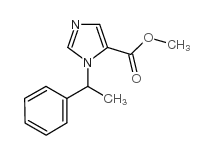Functional imaging of neuroendocrine tumors.
Sofie Van Binnebeek, Wolfram Karges, Felix M Mottaghy
Index: Methods Mol. Biol. 727 , 105-22, (2011)
Full Text: HTML
Abstract
Neuroendocrine tumors (NET) have several distinct pathophysiological features that can be addressed by specific radiolabeled probes. An overview on the different radiopharmaceuticals that have been developed for positron emission tomography (PET) of NET are presented. The focus is on fluordeoxyglucose (F-18 FDG), biogenic amine precursors, somatostatin analogs, and hormone syntheses markers. Due to the highly specific tracers lacking any clear anatomical landmarking, the advantages of integrated functional and morphological imaging systems such as PET-CT are obvious. Based on the up to now published literature and one's own experience, it is concluded that amine precursors (e.g. fluor-dihydroxyphenylalanin and hydroxytryptophane) should be employed in most gastroenteropancreatic NET, whereas F-18 FDG should be preserved for more aggressive less-differentiated NETs. Hormone syntheses markers have up to now only been used in few centers and their broad clinical value remains uncertain. The different available somatostatin analogs are the most promising tracers, since they can improve dosimetry in cases where peptide receptor radiotherapies are planned. Of specific interest are the somatostatin analogs addressing several subtypes of the somatostatin receptor (e.g. DOTANOC) that allow detecting also subtypes not expressing the "classically" addressed subtype 2 and 5. Since NET have a high variety of different features, the individual diagnostic approach using PET or integrated PET-CT should be tailored, depending on the histological classification and the differentiation of the tumor.
Related Compounds
| Structure | Name/CAS No. | Molecular Formula | Articles |
|---|---|---|---|
 |
metomidate
CAS:5377-20-8 |
C13H14N2O2 |
|
Advancing novel anesthetics: pharmacodynamic and pharmacokin...
2014-12-01 [Anesthesiology 121(6) , 1203-16, (2014)] |
|
Anesthesia induces stress in Atlantic salmon (Salmo salar), ...
2010-09-01 [Fish Physiol. Biochem. 36(3) , 719-30, (2010)] |
|
Rates of cortisol increase and decrease in channel catfish a...
2006-05-01 [Comp. Biochem. Physiol. C. Toxicol. Pharmacol. 143(1) , 134-9, (2006)] |
|
Pharmacokinetic and pharmacodynamic properties of metomidate...
2003-04-01 [J. Vet. Pharmacol. Ther. 26(2) , 95-103, (2003)] |
|
The pharmacology of cyclopropyl-methoxycarbonyl metomidate: ...
2014-03-01 [Anesth. Analg. 118(3) , 563-7, (2014)] |